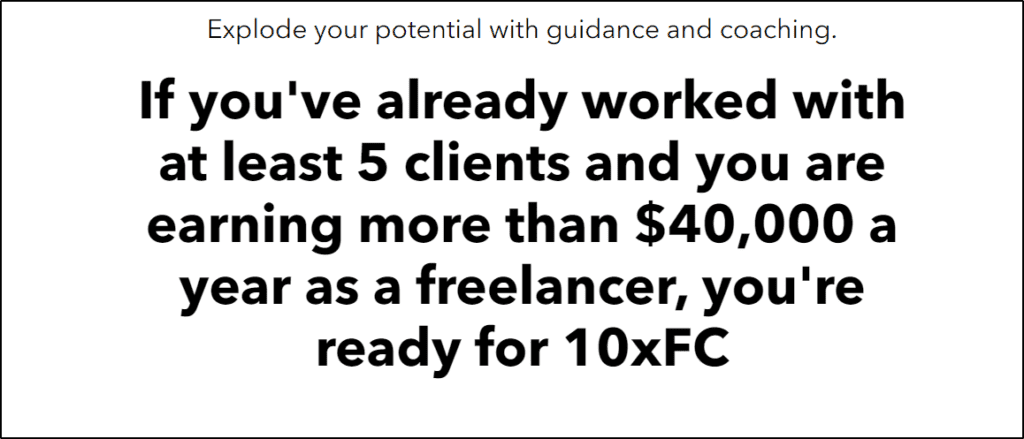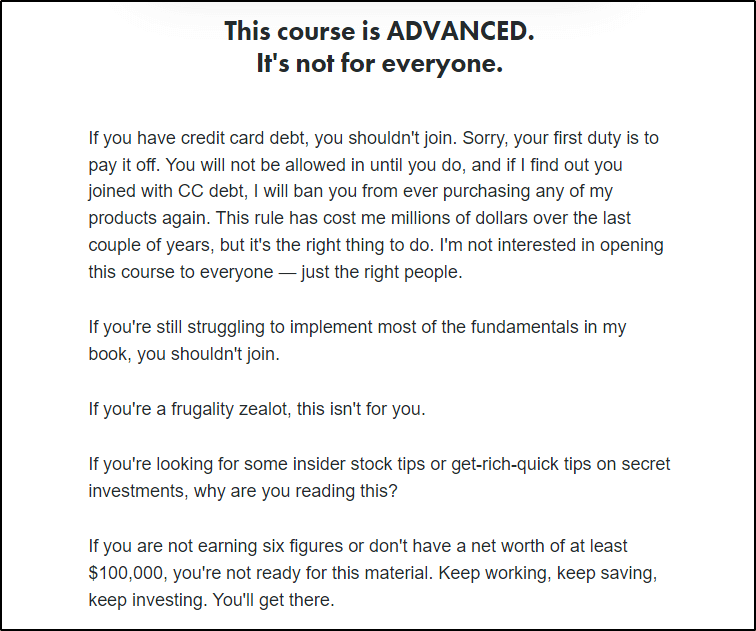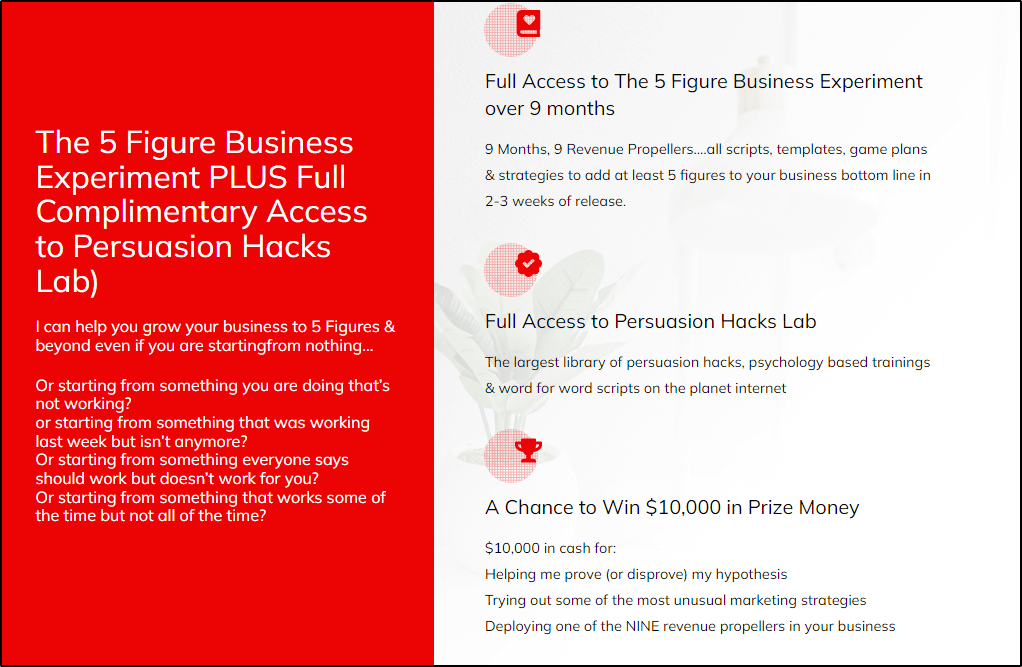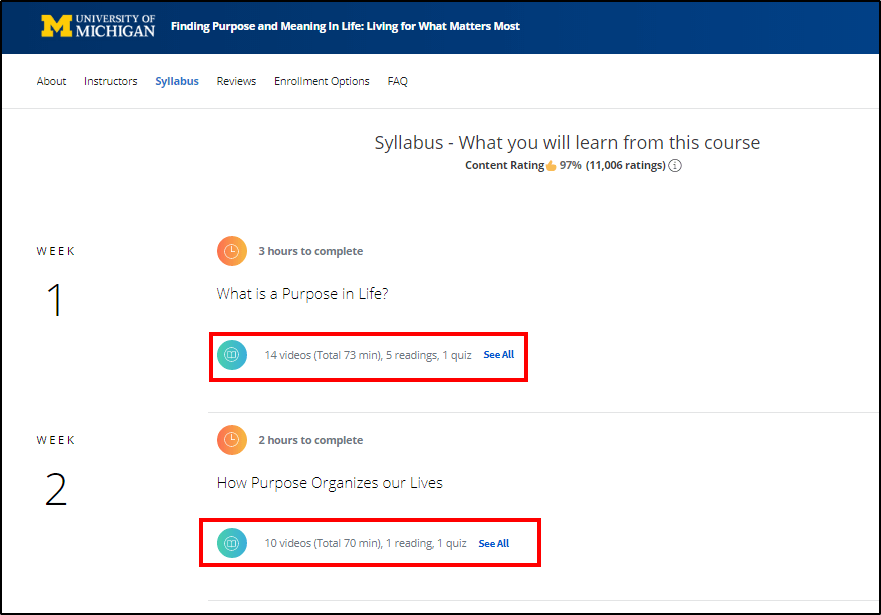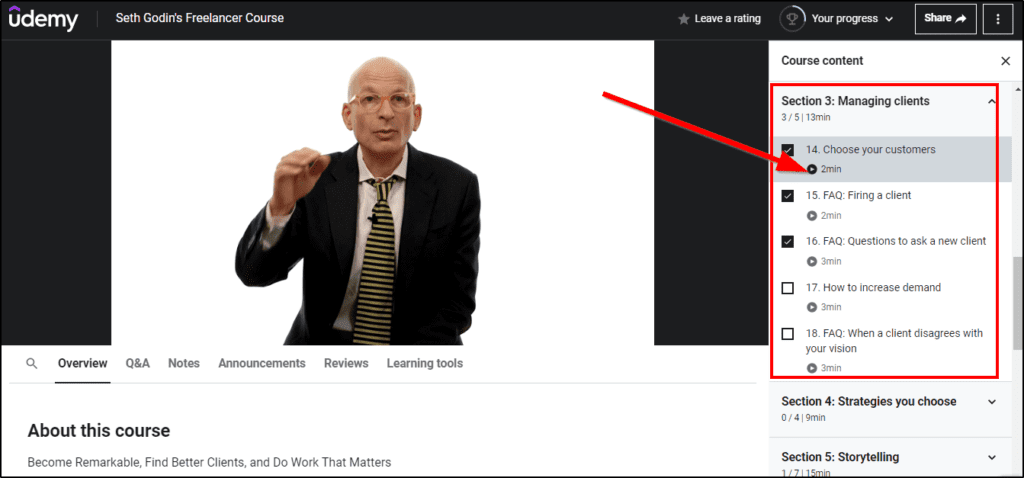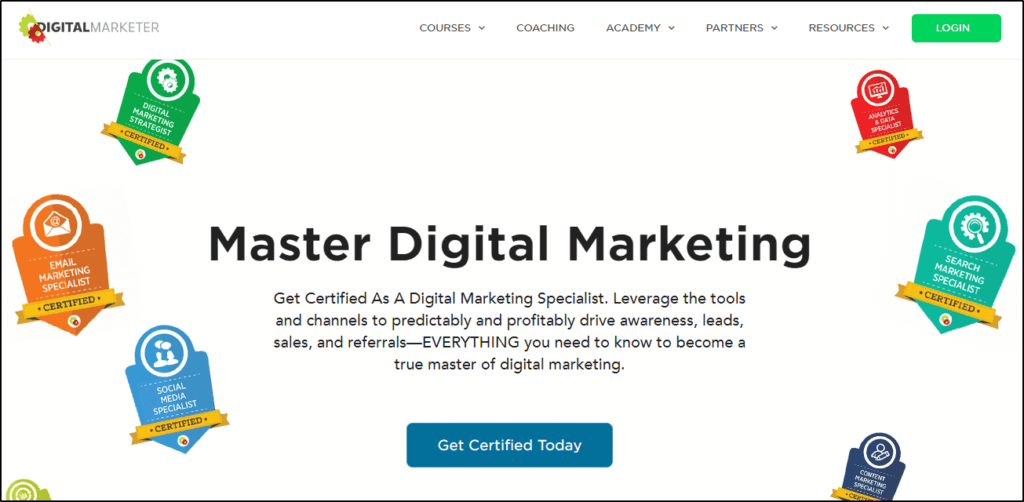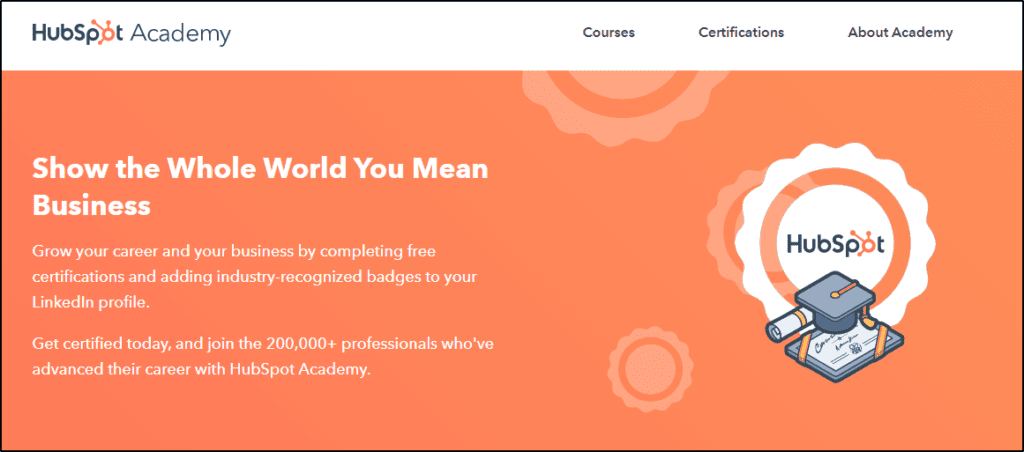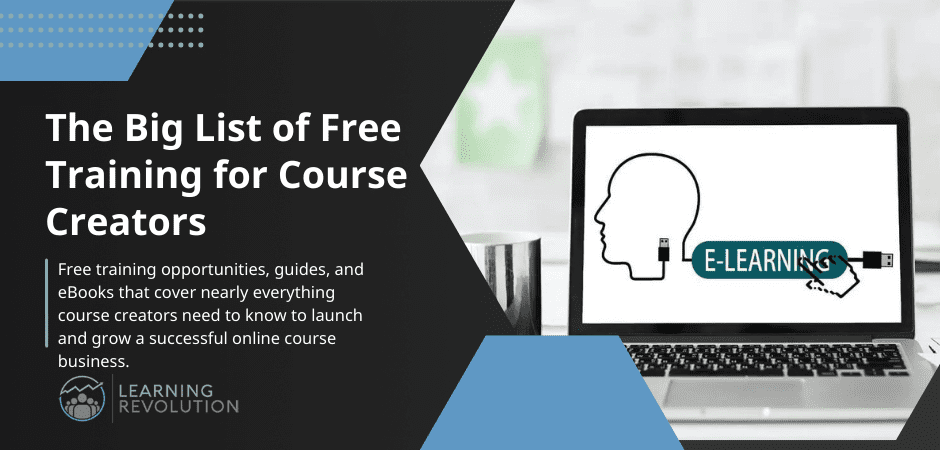

Did you know that, on average, 85% of students never finish an online course? Yes, even those who purchase expensive premium courses.
It’s not a pretty sight because you’ve worked tirelessly for months to create your online course, and you want people to value your content.
So, how do you get more people to finish your online course and get the maximum value from it?
In this article, I’ll share more than a dozen proven ways successful online course creators use to increase their course completion rates.
Let’s get started.
Why Should You Care About Course Completion Rates?
Putting emotions aside, why should you care if someone completes your course or not?
They’ve paid you in full, and that’s the only thing that matters, right? Not really.
Here are a few reasons why higher course completion rates are critical for the growth of your online course business.
Create Success Stories
Success stories and testimonials play a crucial role in driving online course sales. But you can’t create many success stories if your students don’t finish your course, apply your lessons, and get real-world results.
Generate Word Of Mouth
Research shows that 38% of consumers discover products through word of mouth. Your students are more likely to recommend your courses to their friends and family when they fully consume your content and get value from it.
Build A Community Around Your Course Business
As more students successfully complete your course, you can build a solid community or alumni around it. This allows you to sell future courses to your loyal audience and also drive referral sales.
Get Proof Of Concept
Helping students from diverse backgrounds and challenges get results from your courses allows you to see the different ways your content can help people. This enables you to identify new marketing angles and expand your student base.
Improve Your Course
The more people complete your course, the more feedback you’ll get on its quality. This allows you to constantly improve your course content and address the unique challenges of your audience more comprehensively.
Greater Impact
This one is really the most important, in my opinion. Most entrepreneurs don’t get into course creation just shovel more information out to the world. You want to really change people’s lives for the better. Your chances of doing that go up significantly when people make it all the way through your course.
How To Get More Students To Finish Your Online Course
If you want students to follow your course until the end, you need to find different ways to keep them engaged with your course content and motivate them to apply your lessons.
Here are a few ways to help you do that.
1. Manage Expectations On Your Sales Page
Your students’ expectations from your course are vital in determining its completion rates. If your course content doesn’t deliver on the promises of your sales page, students are likely to lose interest and leave it unfinished.
This is why it’s crucial for your sales page to clearly spell out who your course is for and who shouldn’t buy it.
It should list the different use cases of your course and highlight the key traits of the people ideally placed to get the most value from it.
The sales page of 10x Freelancer by CopyHackers uses this technique.
Similarly, your sales page should also clearly mention the people your course is NOT for. Unfortunately, many course sellers hesitate to do this, fearing their conversion rates would tank.
In reality, though, it would get rid of prospective students who wouldn’t have found value in your course.
You might lose a few hundred dollars because of this, but it would drastically improve your student quality.
For example, Ramit Sethi includes a “This Is Course Is Not For You” section on almost all his sales pages.
Also, add a module-by-module break up of your course, the content types you will use to deliver your content, and the other critical details of your course to help your prospects decide if it’s suitable for them.
This sales page from Bushra Azhar’s course is an excellent example.
2. Use Multiple Content Types In Your Course
Online courses can quickly become monotonous and boring if all of your content is in the same format. So, consider mixing things up by using videos, PDFs, text lessons, audio clips, and other content formats to deliver your course content.
An easy way to do that is by using additional learning resources for every lesson in your course. For example, if you have a video lesson on email marketing, provide supporting resources such as checklists, templates, and eBooks.
If most of your course is text-based, try adding 1-2 videos for every module so that your students don’t find it monotonous and unengaging.
For example, this course by The University Of Michigan clearly mentions the different content types included in every lesson.
If you’re selling a high-ticket course, most of your content should ideally be in video format. However, you’d still want to add text lessons and learning material to make your content more valuable and engaging.
3. Break Down Your Course Into Smaller Lessons
Did you know that an average internet user has a shorter attention span than even a goldfish? Okay, there’s really no solid evidence to support this popular meme, but still it clearly rings true – and people do clearly have a lot more demands on their attention these days.
This means your audience cannot concentrate for long and will likely lose interest if your lessons are too long.
How do you address this challenge? By breaking down your course into smaller and easily digestible segments.
The best approach is to create different modules within your course that represent different chapters or broad topics. Then break down the modules into multiple lessons that contain your video or text content. Doing this helps your students navigate around your course content easily.
But that’s not enough.
To help your audience consume your content, make sure your videos or text lessons aren’t too long.
How do you define too long? Generally, a video lesson of 5-7 minutes is fine. But, if it gets longer than 10 or 15 minutes, consider breaking it down into two separate videos unless it’s necessary to share the whole lesson in one video.
Seth Godin’s freelancing course on Udemy is an excellent example of this approach.
No video in Seth’s course is longer than 4 minutes, most are under 3.
How do you provide value in such short videos? Seth’s intelligently broken down longer videos into bite-sized clips that students can quickly watch.
Moving from one lesson to another keeps the students motivated and engaged throughout the course. So, if you have a 15-minute video, break it down into five videos of three minutes each to make it easier to watch.
Similarly, make your text lessons easier to digest by using smaller paragraphs, multiple sub-headings, bullet points, etc. If a lesson gets longer than a thousand words, consider breaking it down into smaller chunks.
4. Improve Your Course Accessibility
Most people who enroll in online courses are busy professionals looking to skill up during their free time. They don’t always have the time to sit in front of a laptop screen to watch your courses.
Plus, according to recent stats, nearly 60% of the internet traffic now comes from mobile devices.
This is why you must ensure your courses are accessible on mobile devices as well. Users should be able to log into their member’s area and continue watching your course content from where they left off.
Most online course platforms like Thinkific, Kajabi, Teachable, Teachery, etc., are mobile-responsive which means if you host your courses on any of them, your students would be able to access your content easily across devices.
These platforms also ensure that your student’s progress is saved in the cloud, so they don’t need to worry about losing track of the course when changing devices.
However, if you’re hosting your content on a WordPress or custom-coded site, you need to ensure you’re using a responsive website design theme.
Otherwise, your students will have difficulty navigating your course content, ultimately leading to higher abandonment rates.
Plus, you’d need to use an LMS solution to ensure your student’s progress is not lost when they close the browser window.
5. Offer Bonuses On Course Completion
An extremely effective way to increase course completion rates is to offer special bonuses for finishing the course.
For example, you could offer a bonus one-on-one session to the first five students who finish your course and all related assignments.
Or you could offer access to your other courses to the first five students that complete your course.
Using such incentives motivates students to keep learning and going through your course content. However, you’d need a tracking mechanism to ensure that you offer bonuses to the right students.
You can automate this by defining the qualification criteria for your bonus content in your online course platform (if it has this feature, of course).
But use this option only when other tactics don’t work. Offering one-on-one consultancy sessions or other forms of bonuses requires additional work and may increase your course creation cost. Additionally, bonuses are a form of extrinsic motivation. Too much reliance on extrinsic motivation can dampen your learners’ intrinsic motivation. (More on motivation and learning here.)
6. Drip-Feed Your Course Content
If you want a high percentage of your students to complete your course, don’t give them full access to the course at once. Why? Because most people lack the discipline to go through a long course themselves.
The better approach is to drip-feed your course content.
Drip-feeding means releasing or unlocking your course content periodically or based on your student’s progress. For example, you can grant students access to new lessons only when they finish the pre-requisites.
Or, you could define a fixed timeline to release new lessons. For example, if your course has six different modules, you could unlock each module every month.
Again, you’d require a modern online course platform to drip feed your content. Thankfully, most course platforms offer this feature, so you won’t have trouble finding the right tool.
Some platforms allow you to apply drip-feeding to individual lessons, while others limit drip-feeding to course modules. For more extensive courses, drip-feeding lessons is the better option.
7. Announce A Course Expiration Date
Want people to finish your courses fast? Don’t offer lifetime access. Instead, set an expiry date after which students can’t access your course content.
This creates urgency in your students, which pushes them to complete the course before it goes away.
However, you need to be careful in choosing these deadlines. Otherwise, it could easily backfire.
Remember that your goal is to encourage students to consume your content as quickly as possible.
So, use generous deadlines that only serve as a reminder that your course isn’t available forever. In my experience, a deadline of 30 to 60 days after your final lesson is released hits the sweet spot.
But it would ultimately depend on your content and any additional coursework for your students.
8. Send Email Reminders To Engage Students
Everyone is busy these days, and finding time for learning isn’t easy.
This is why email and SMS reminders from time to time do an excellent job at bringing students back to your course and helping them consume your content.
There are different ways to use reminders.
- You can send flat weekly reminders irrespective of your student activity.
- You could send reminders whenever a new module or lesson is unlocked for your students.
- You could send automated reminders based on student activity. For example, if a student is stuck on a lesson for too long, you could offer help via email. Similarly, if a student hasn’t logged into the course for several weeks, you can send automated email reminders to bring them back.
You can configure these automated emails using your online course platform. Kajabi, Kartra, and Podia are some of the best online course platforms for email marketing features.
Apart from these emails, you could also send emails just to check on how your students are doing.
This email from Joanna Wiebe to 10xFreelancer students is an excellent example.
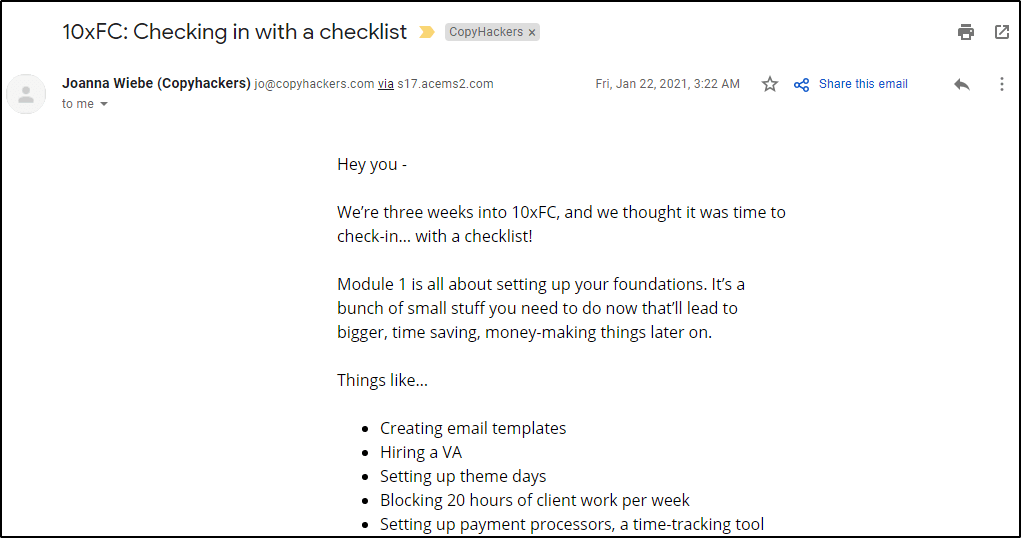

You could also send email reminders before a new lesson is released, reminding students to jump on it.
Samar Owais used this approach by sending email reminders before every live class.
![email from Samar Owais at Emails done right -"[EEBC] Q&A Workshop 2 is today!"](https://www.learningrevolution.net/wp-content/uploads/email-from-Samar-at-Emails-done-right-EEBC-QA-Workshop-2-is-today-.png)
![email from Samar Owais at Emails done right -"[EEBC] Q&A Workshop 2 is today!"](https://www.learningrevolution.net/wp-content/uploads/email-from-Samar-at-Emails-done-right-EEBC-QA-Workshop-2-is-today-.png)
Like every other approach, this one also has its risks.
For example, if you email your students too frequently, they’re likely to start ignoring your messages or mark them as spam (in the worst case).
So be selective in your email messaging to ensure that students take notice when you speak to them.
9. Award Completion Certificates
Who doesn’t like adding a shiny certificate to their profile? Certificates are an excellent way to motivate students to complete your course because they make them look more credible.
They can proudly feature certificates in their social media profiles, wave them to get clients, and command respect among their audiences.
This is why some of the most popular online course businesses offer certificates to successful students.
Digital Marketer is a good example.
It offers certifications for email marketing, social media marketing, content marketing, copywriting, and several other skillsets.
HubSpot Academy is another excellent example where some of its most popular courses come with a certification.
Many other organizations, including Google, Facebook, Klayvio, SendInBlue, etc., motivate students to complete courses by offering certifications.
Thankfully, creating and awarding certificates for your courses is pretty straightforward if you’re using any leading online course platform.
For example, Thinkific gives you multiple certificate templates using which you can create and automate the certification process.
Similarly, Kajabi allows you to define the certification criteria and automatically awards certificates to qualified students.
10. Add Live Sessions To The Mix
Creating, managing, and handling 100% live courses is challenging. This is why most online course creators use recorded videos to deliver their content.
However, you can significantly increase your course engagement and completion rates by adding a few live sessions to the mix.
Live sessions are much more engaging than recorded videos because they give your students the chance to directly interact with you and pick your brains. It’s also a good opportunity to tell your students the importance of finishing the course.
Such engagements can go a long way in improving your course completion rates.
How do you add live sessions to your course? You have several options.
For example, you can host a live session a week after releasing a module to check in with your students.
You can use that call to deliver the concluding lesson of the module and share fresh content not included in your recorded sessions.
Or you could host a live Q&A call at the end of every module where your students send their questions, share their challenges, and seek advice.
You can include the recordings of these Q&A calls as bonus content the next time you open your course enrollments.
However, you need to consider several challenges with hosting live sessions.
Number one, you’ll need to find the most suitable time slot if your students are in different time zones (mostly the case with online courses).
The other challenge is to manage the scope of your calls because when students get their hands on you live, the conversations can easily drag you away from the core topic.
Still, the benefits of live calls vastly outnumber the risks. So, if possible, make them a part of your course and help your students finish your course.
11. Add Students To A Community Support Group
Want students to stay complete all your course lessons and apply them to achieve results? Give them a supportive community that helps them overcome demotivation, lack of self-belief, confusion, and other challenges.
Creating a separate Slack, Discord, or Facebook Group for your students allows them to build relationships and find study partners for more effective learning. You may even want to consider using a dedicated online community platform.
If you create an open and shame-free environment in your community, your students will openly ask questions and share their challenges with each other.
You can help them by directly answering their queries or connecting them with other students who have already overcome those challenges.
Similarly, you can encourage students to create teams for group learning and find accountability partners for each other.
Even better, you can assign mentors to each group from your previous batches. This would make for a highly engaging learning environment where everyone motivates and helps each other on their learning journey.
12. Include Quizzes And Assignments With Every Module
You don’t want students just to watch your videos and move to the next lesson. Instead, you want them to gain actionable insights, improve their understanding of the topic, and get closer to their goals with every lesson.
So, to ensure they’re actually learning something, make quizzes and assignments a mandatory part of your course content.
Use multiple-choice and open-ended questions to gauge your student’s understanding of the topic at the end of every module.
Grade their quizzes and assignment, and provide them feedback that helps them grow. This would help you understand how much people are learning from your content and act as a motivation for your students to try harder.
Ultimately, all of this leads to greater student engagement which is pivotal to achieving high course completion rates. It also leads to greater learning – when done right, testing, even self testing, is one of the most research-supported methods for helping learning to stick.
Most online course platforms allow you to create quizzes and assignments. However, you’ll need to explore the tools in more detail to find the types of quizzes and assignments they offer. For example, some platforms only offer mutliple choice questions, while others include open-ended questions and graded assignments.
13. Use Leaderboards And Award Badges
Leaderboards and awards are excellent ways to encourage competition among your students, motivate them to be the best, and consume your course content till the end.
They reflect the student performance in different quizzes and assignments in your course. You can create leaderboards for different modules or the overall course performance.
Similarly, awarding badges to student profiles makes them stand out from their peers and is an excellent, motivating tool to make your students work harder.
However, not all online course platforms offer these features, so you’ll need to find the ones that do. For example, both Kajabi and Learnworlds offer leaderboards and badges. Similarly, other tools such as Thinkific, Teachable, and Podia offer a mix of student engagement features.
You can explore all of these tools in our detailed review of the best online course platforms.
Increasing Course Completion Rates Is Hard, But Not Impossible
Despite using all the tactics I’ve shared in this article, many of your students will still not complete your course.
And that’s fine.
Because not everyone signs up for your course to complete it. Instead, they have specific needs or challenges, and as soon your course fulfills them, they move ahead. There could be a dozen other reasons.
But here’s the point to remember.
Your job is to create a high-quality course and deliver it in a learner-friendly manner. After that, you need to keep checking in with your students to ensure they’re learning and moving ahead using the strategies I’ve shared in this post. If some students still don’t complete your course, it’s their loss.
By Jawad Khan for Learning Revolution
See also:
- How to Create an Online Course to Sell
- How to Build a Learning Community
- 7 Steps to Record a Successful Virtual Presentation
Table of Contents
